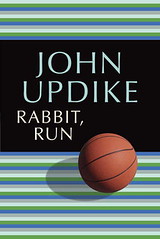YCRT! is a periodic post featuring banned book reviews and news roundups.

Is your child’s teacher thinking about sex? Right this minute?
- Smutty-minded parents in Ohio clamor for a high school teacher to be fired after she writes a novel with sex in it
- Same thing (Pennsylvania, last year)
Michigan educators stand firm against removing Jeannette Walls’ memoir The Glass Castle from a freshman honors reading list, saying knuckling under to community pressure would “have a chilling effect on the district’s willingness to use potentially controversial material, regardless of its educational merit.” Here is an excellent run-down on the history of parental challenges to The Glass Castle.
Usually when you read a headline that includes the words “library” and “porn,” the story’s about some book-banning parent trying to claim Slaughterhouse-Five is pornography. Not this time!
Is Facebook purging the accounts of pro-gun users? I’m not buying it. I see plenty of pro-gun posts in my Facebook news feed, and I bet you do too. Of course, Facebook is a corporate entity: it can and does censor content. Here’s a cheat sheet used by Facebook content censors.
Not sure what to call this. Anticipatory copyright suit censorship? Amazon pulls self-published memoir about Star Wars because it references Star Wars. Seriously, let’s kill all the lawyers.
Michael Chabon reads Huckleberry Finn to his children … and winds up substituting one n-word for another.
Yet another challenge to The Absolutely True Diary of a Part-Time Indian. Speaking of which, here’s the author, Sherman Alexie, speaking about the value of subverting authority.
I concentrate on book challenges and bannings in North America, where informed citizens can fight back. This is not the case in most of the world.
YCRT! Banned Book Review
 Rabbit, Run
Rabbit, Run
John Updike
I read somewhere that Updike wrote Rabbit, Run at least partially in response to Kerouac’s On the Road. If true, it’s Kerouac’s novel’s evil twin. Maybe the fact that I read Kerouac as a teenager, whereas I didn’t read Updike until late middle age, accounts for my conflicting impressions. When I was 15, Kerouac filled me with a sense of exhilaration. As a 60-something adult, Updike had me reaching for the Xanax, depressed to the point of suicide. But stick with me—this doesn’t mean Rabbit, Run isn’t a brilliant, important book.
The characters in On the Road are running, but not from responsibility—they don’t have any. Harry Angstrom, the Rabbit of Updike’s novel, does have responsibilities—and he’s running from them as fast as he can. He’s an immoral craven, a coward, the very definition of an anti-hero. And yet you can’t help liking him, just a little.
I grew up in a military family, moving every three years to different parts of the USA and Europe. I loved the promise of new horizons and couldn’t wait to go to college, sow some oats (which constituted much of the appeal of On the Road to teenaged readers of the 1950s), grow up, and see what the future may bring. Rabbit sees all the future he’s ever likely to see the moment he opens his infant eyes. He grows up in a small Pennsylvania town, goes to high school there and is a bit of a basketball hero, and now lives and works within blocks of everything he’s ever known. He’s married to his high school sweetheart, who’s nearing the end of her second pregnancy and has become a sexually unresponsive alcoholic. He’s uneducated, has a crap job, isn’t going anywhere, and is utterly stuck. Is it any wonder Rabbit runs?
When Rabbit runs from one squalid situation to another, he ruins lives. He tries to straighten out, but his despair keeps overwhelming him and off he runs, ruining more lives, over and over. As the book closes, he’s running again. Harry Angstrom, though the word was little used then, is a sociopath, a user of people, a loner who deep down doesn’t really believe other people exist in the same sense that he himself exists. But he is a sociopath you can at least partially understand, and that is where Updike proves himself a master.
I read Rabbit, Run as part of my personal banned books project. When I read a banned book I try to find out why it was controversial. Updike wrote Rabbit, Run in the late 1950s; it was first published in 1960. In those days sex was not a subject for open discussion. Lady Chatterly’s Lover was still banned in most communities in the USA, the birth control pill did not exist, Vatican II had not yet occurred, girls who got knocked up in high school simply went away to who knows where. So what did Updike decide to write about? Ah, you guessed it.
John Updike is famous for his unashamed, fearless exploration of sexual relationships. Even today, his writing can make readers squirm. Pimples and warts, smells, secretions, wet spots, the most intimate secret desires, the involuntary noises we make when we come—all are grist for Updike’s mill. Can you imagine how shocking his writing must have been in 1960? Indeed, upon it’s publication Rabbit, Run was widely banned in the Americas and Europe, and as late as 1986 parents in Medicine Bow, Wyoming demanded its removal from a high school reading list (link, scroll to the end). With the resurgence of right-wing Christianism in the USA, I wouldn’t be surprised to learn it’s being challenged all over again.
Rabbit, Run is many things—depressing, embarrassing, thought-provoking—but it retains its power, and above all, it is real.